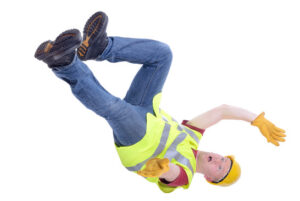The right choice of work shoes for slip resistance

 Making the right choice of footwear for resistance to slipping ("anti-slip footwear") from a whole range of products presented on the market is quite a difficult task for most buyers. The description of the shoe is very varied, from "improved grip on the surface" to "excellent slip resistance on all surfaces". Often manufacturers and suppliers write in their advertising brochures "anti-slip or non-slip soles", but unfortunately the brochures do not describe the conditions under which such work shoes will be most suitable. Therefore, the purpose of this article is help in choosing the right work shoes, which has slip resistance properties. We hope that this information will help reduce or completely eliminate occupational injuries related to involuntary slippage.
Making the right choice of footwear for resistance to slipping ("anti-slip footwear") from a whole range of products presented on the market is quite a difficult task for most buyers. The description of the shoe is very varied, from "improved grip on the surface" to "excellent slip resistance on all surfaces". Often manufacturers and suppliers write in their advertising brochures "anti-slip or non-slip soles", but unfortunately the brochures do not describe the conditions under which such work shoes will be most suitable. Therefore, the purpose of this article is help in choosing the right work shoes, which has slip resistance properties. We hope that this information will help reduce or completely eliminate occupational injuries related to involuntary slippage.
Please also note that the choice of work shoes should take into account a number of factors, in addition to slip resistance, such as comfort, durability and protective properties of the work shoes and which should be considered in a complex.
Tips:
1) Accidents can cost companies dearly – there are many hidden costs or costs that are difficult to predict. With shoes, as with any other product, you most likely get what you pay for. Make sure you buy work shoes that are suitable for your working conditions - this is not necessarily the cheapest option. But it can be more convenient, more attractive, have higher protective properties - this is a guarantee that your staff is reliably protected and nothing prevents them from doing their work effectively. and consult with your supplier for appropriate footwear.
3) Some types of work shoes may not be suitable in difficult working conditions where high slip resistance is required. So, for example, shoes that work well on a wet surface may not be suitable for work on an oily surface, etc.
4) Discuss with your supplier about conducting production trials of work shoes to help you make the right choice, rather than making selections based only on brochure descriptions or laboratory test data 5) Trials should include a sufficiently representative sample of work shoe users and the duration of the trials should be sufficient to obtain objective results. Remember - workers cannot wear special footwear if it is inconvenient to operate or impractical, regardless of what protective properties it has.
What is important to know about the sole of work shoes
1) The integral tread pattern and integral tread joint are very important for skid resistance. As a general rule, soft soles with a tightly packed tread pattern work well with indoor liquid pollutants. The only sure way to find out which work shoes are best for you is to do a production test.
2) The tread profile of the sole must not be clogged - the sole must be cleaned regularly. If the sole is often clogged, it is necessary to look for alternative options for the design of the sole, for example, with a wider space between the tread elements or shoes with a deeper tread pattern.
3) The slip resistance properties can change over time due to wear and tear, so it is necessary to regularly evaluate the condition of the tread and make timely replacements before the shoes become worn and unsafe for use.
4) The right choice of footwear for working on a wet or dirty steel or aluminum surface is very important. With some types of surfaces, the profile of work shoes does not provide improved slip resistance.
5) "Oil and gasoline-resistant sole" does not mean high slip resistance on an oiled surface - it is only information that the sole will not be damaged in contact with oils and petroleum products.
Slip resistance test
You can contact the supplier of work shoes to get information about the tests and their results. The protective properties of the shoes, including slip resistance, are tested according to the test established by the European standard ENISO 20344:2004 (ДСТУ EN ISO 20344: 2009 "Means of individual "Professional footwear. Test methods". Footwear that has passed the slip resistance test will be marked with one of the following codes, SRA, SRB or SRC.
The codes indicate that the shoes meet the specified requirements, subject to the following tests:
- S.R.A – Slip resistance on ceramic tile floors (surface with sodium lauryl sulfate (SLS));
- SRB – Slip resistance on steel floors (with glycerin);
- SRC – Both of the above tests.
It should be noted that the surfaces used in the tests do not always correspond to the surfaces encountered by consumers of work shoes, so obtaining additional information or conducting additional tests will help you make the right decision.
If you need professional consultation in choosing work shoes, which corresponds to your working conditions - contact our specialists, who will always be happy to help you with this.













